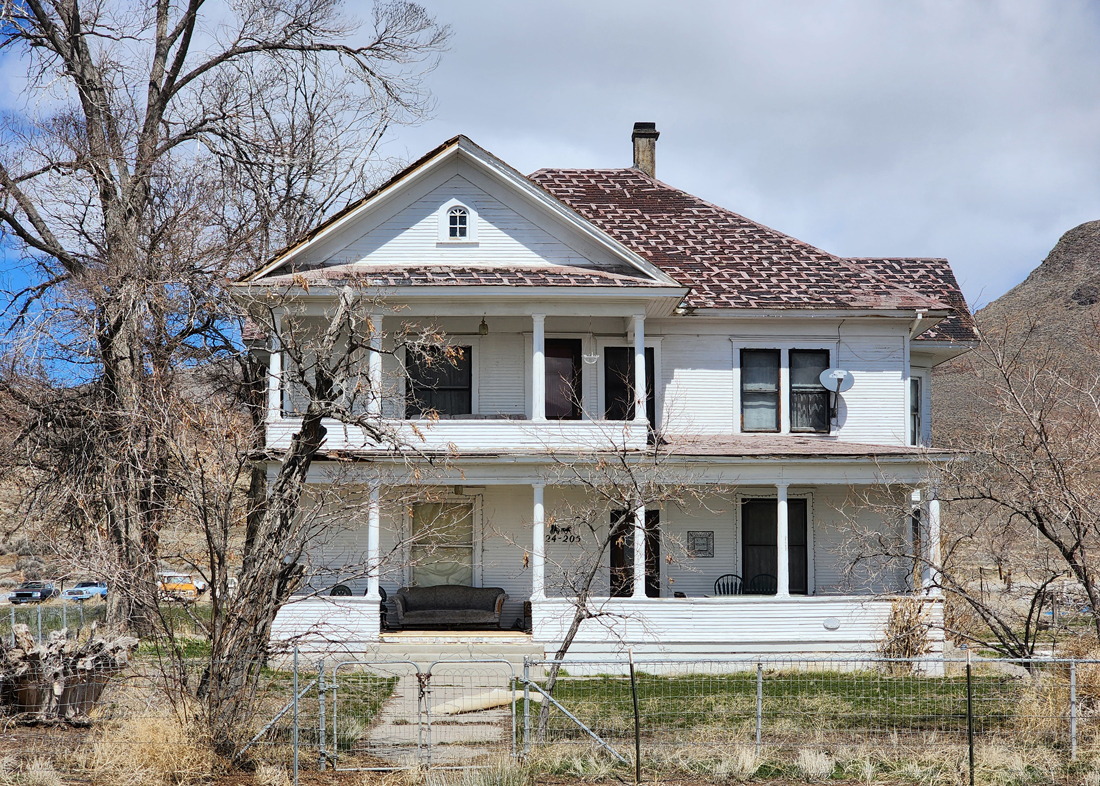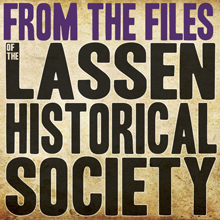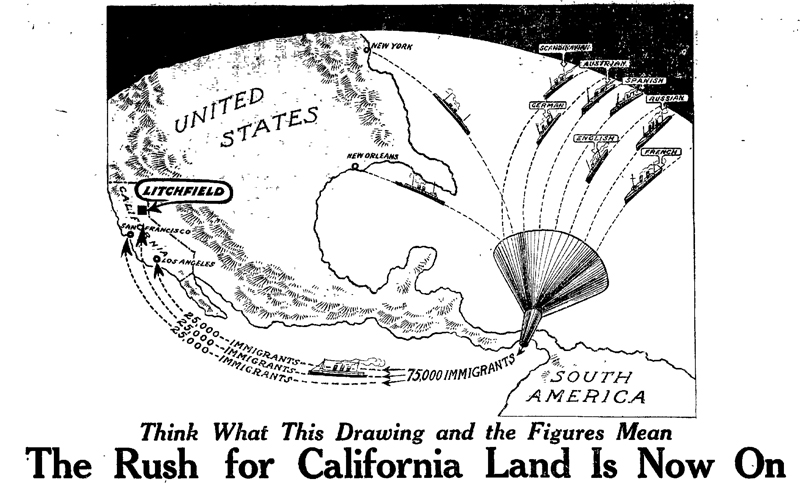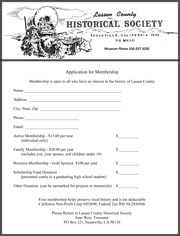

by Susan Couso
Sometimes when people see a stately home, they think of how lucky the owners are. While ‘luck’ most certainly plays a part in a great number of successes, hard work and determination play a much larger role in most.
The beautiful Gibson Ranch on Highway 395 in the Litchfield area is a perfect example of this.
Benjamin Franklin ‘Frank’ Gibson came ‘West’ from Iowa in the late 1880’s. He had been born in Ohio in 1865, and worked in the ranching business in the Reno area before venturing into Honey Lake Valley with, “good health, a great ambition, and the small sum of $300.”
While in Washoe Valley, Frank Gibson met the vivacious Clara Litch, who had made a name for herself by graduating from the University of Nevada in 1893. Clara taught school before marrying Frank in 1894.
The newly married couple came to Honey Lake Valley and purchased the Litch Ranch from Clara’s father, Andrew Litch, who had resettled near Reno in 1882. From that time on, the Gibson Ranch became a showplace of new and profitable agricultural methods.
Frank Gibson continued to experiment with new crops and procedures to heighten productivity of the fertile Honey Lake Valley soil.
Gibson had the first profitable vineyard in the valley, even negotiating with the Welch’s Company to sell his Concord grapes. Welch’s planned to build a factory in the area if enough grapes could be grown. Unfortunately, Lassen County’s fickle climate quashed this plan.
The ranch grew strawberries in great quantity and was very successful in establishing many other crops. Gibson’s most prolific and popular crop was melons. His watermelons and cantaloupes were in great demand, and Gibson shipped great quantities via the railroad to other parts of the west.
His apples, peaches, pears and plums and potatoes were likewise sought after. These popular crops, along with turkeys, cattle, and other livestock, made Gibson a prosperous man.

Gibson continued to add to the original ranch acreage, claiming and purchasing property until he amassed 3,000 acres of the finest land in the valley. The land sat close by the railroad line at Amedee and only a mile from the Southern Pacific line which came through the area in 1913.
Gibson had advantages over many other ranches, but these advantages were achieved through shrewd decisions and foresight.
The ranch house, with its 12 large airy rooms, was designed and built by Gibson, who had carpenter experience from the ‘old days’ in Iowa. It included all of the modern conveniences of the time, with running water piped from an Artesian well located near the house and pumped under pressure to provide for all the family needs. There was also a gas plant in the pumphouse to provide heat and lighting.
The house was the first in the vicinity to have both a telegraph and a telephone, making the Gibson Ranch one of the busiest places in Lassen County. From the time that the N.C.O. Railroad reached Amedee around 1890, the property had been a stopping place for those traveling to and from the Amedee depot and Susanville.
With Gibson’s improvements, the stopover became even more popular. It really was the center of activity in the Litchfield area.
Clara and Frank Gibson began increasing their family with the birth of their son, Jay, in 1896. The family continued to grow with the birth of five beautiful daughters, Erma in 1897, twins Frankie and Fern in 1899, Clara in 1901, and Jessie in 1903.
One can only imagine this home filled with the ruffles and giggles of five little girls enhancing the atmosphere. The ranch was the site of numerous parties, celebrations, weddings and other events, and Clara Gibson was considered to be the consummate hostess.
In 1915, B. F. Gibson, W. B. DeWitt, J. W. Mapes, W. A. Dill and J. H. McClelland bought the Standish Meat Market. This provided them the opportunity to sell their meat at a lower price by ‘cutting out the middleman’. Their slogan, “We pay cash for what we buy – and also sell for cash.”
Visitors to the home became an almost continuous flow as Reno relatives and friends decided to visit the ranch for a relaxing and well-appointed vacation, and passers-by stopped to call. It was also a meeting place for various clubs and associations and discussions among the ‘men folk’ of the farming community.
To ease the strain on his family’s home-life, Frank Gibson built a new two-story building just to the east of the house in 1916. The building was to house a new school, containing a kitchen and dining facilities downstairs and a huge hall upstairs. The hall was used for meetings and dances and other events to promote the community.
On November 18th a large affair was held to celebrate the opening of the new school. The dancing and Victrola music continued until the ‘small hours’ of the morning when the weary celebrants returned home to begin the day’s chores.
As the Bly Tunnel project promised to bring water from Eagle Lake into the valley, Gibson jumped at the chance to use this new opportunity to further his fortune. In 1922, he joined Charles E. Emerson, D. Grant Beale, and Alvah W. Nash to form the Litchfield Realty Company.
The men expected a huge surge in population as the Bly Tunnel brought water to the valley. The company controlled about 10,000 acres of Belfast and Gibson land.
Gibson took a section of his property and divided it into 5 and 10 acre lots. The land was advertised as “near the railroad” and “deep fertile soil”. Unfortunately, the Bly Tunnel failed in its promises, and this venture of Gibson’s did not ‘pan out’.
The Gibson family was undoubtedly one of the families who brought note and prosperity to Honey Lake Valley, and the death of Benjamin Franklin ‘Frank’ Gibson in 1952 was a great loss to the community. Frank died at the home in Litchfield that he loved so much. Clara Litch Gibson followed him in 1955.


If you are a fan of our weekly history stories you should join the Lassen County Historical Society! It’s a fun way to be a part of our county’s rich history. When you sign up, you’ll receive regular Historical Society newsletters with interesting stories and information. Membership is open to anyone with an interest in area history.
Through your membership you help preserve local history. You can download a membership application by clicking here.





